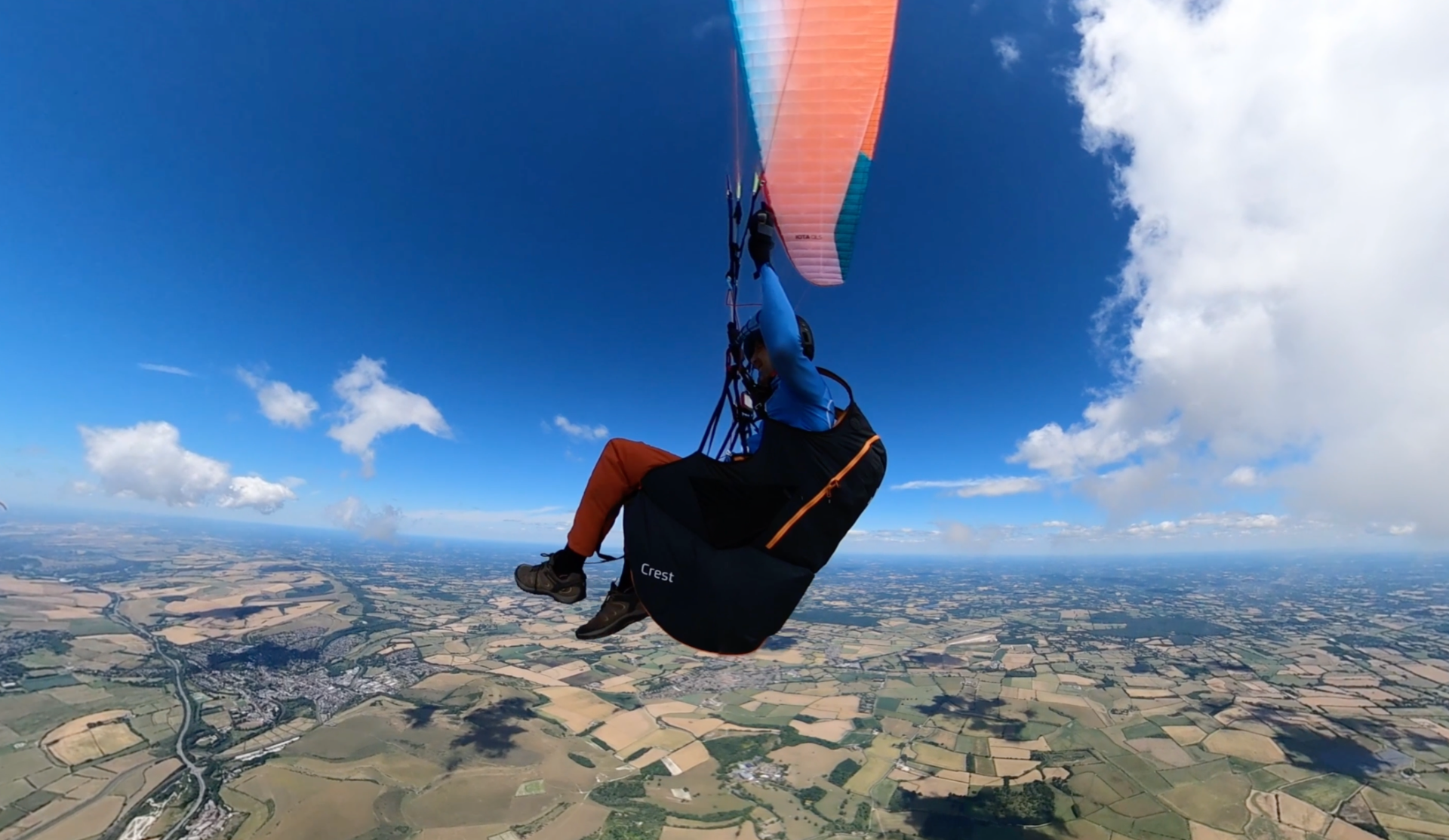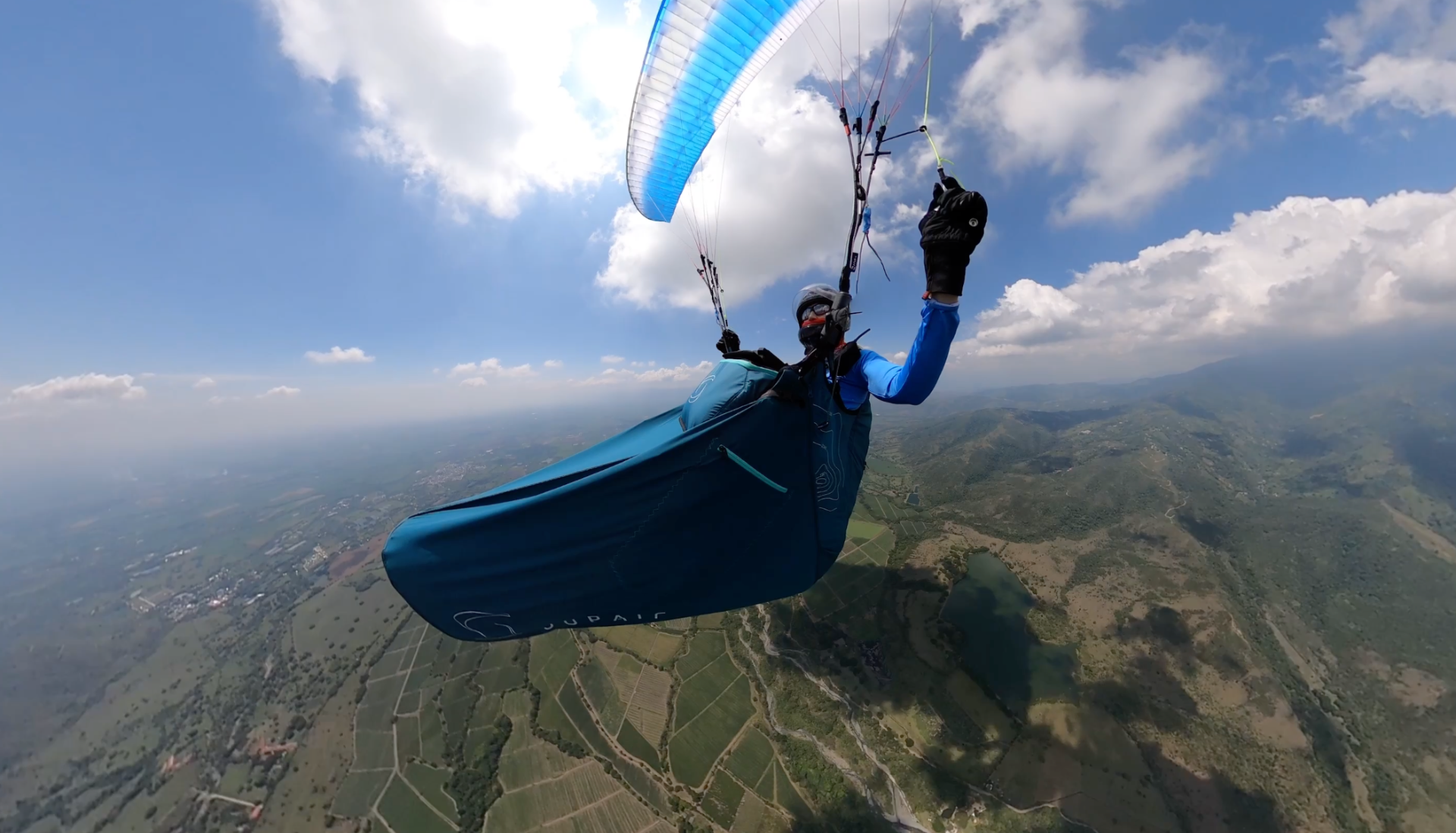
There is a bewildering choice of paragliding harnesses available. How do you compare the market when there are so many different styles, so many features, and so many brands? We set out the fundamental principles of choosing the right harness so you can develop a clear sense of what suits your flying skills and aspirations.
In this series we will cover the classes of harness, features you need, matching harnesses to pilots and finding the correct fit, how to set up your harness and, finally, some maintenance issues.
Paragliding Harness Classes
Paragliding harnesses can be divided into several categories:
- Standard Paragliding Harnesses
- Reversible Paragliding Harnesses
- Pod Paragliding Harnesses
- Mountain Paragliding Harnesses
- Acro Paragliding Harnesses
- Tandem Paragliding Harnesses
- Speed Flying Harnesses
Although there's no official harness classification system as there is for wings, most are tested according to EN 1651 (load testing) and LTF91/09 (protection testing).
Standard Paragliding Harnesses
Standard paragliding harnesses are open, with free legs and an upright position, making them ideal for beginners and recreational pilots. Suitable for a wide range of pilots, most feature seatboards, with some using split-leg designs. Many support foot stirrups, and a few can add a speedbag to convert them into a pod harness. For clearer classification and easier buying decisions, reversible, pod, mountain, acro, tandem, and speed flying harnesses are not included in the standard paragliding harness category.
There is a fallacy that buying a pod at the beginning of your flying career saves you money because you don’t have to buy again. This is like buying a Sports Class wing ‘to grow into’: it fails to acknowledge the increased risk you create by doing this during the learning phase. Wise gear choices should reduce your risk, not increase it.
Get the equipment that matches where you currently are in your progression, so you can build your skills on a solid foundation. Confidence is the cornerstone of all flying development. You can always sell your ‘starter’ harness again to someone else who shares your understanding of progressing step by step.
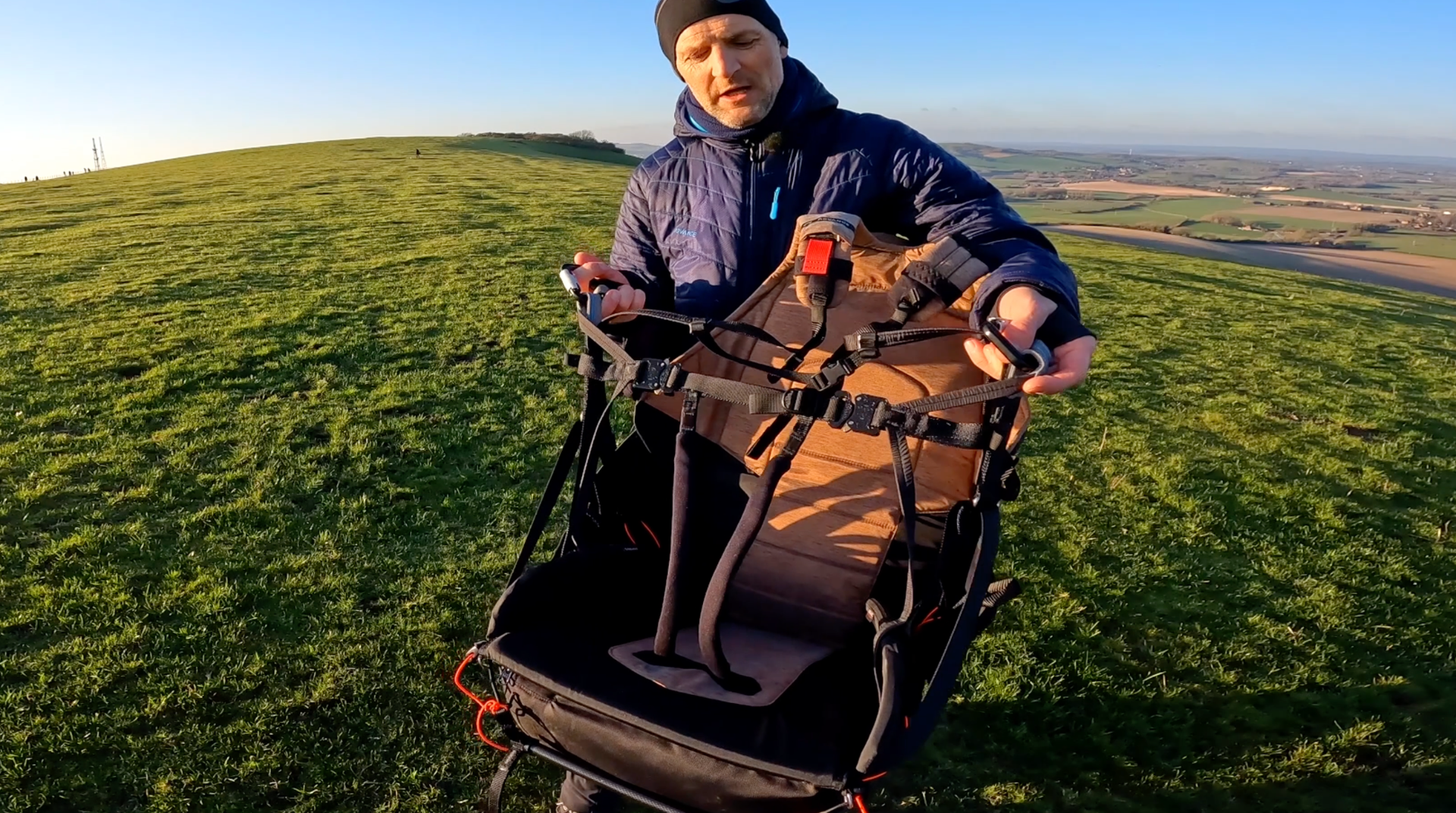
Safety Benefits of Standard Paragliding Harnesses Compared to Pod Harnesses
Standard paragliding harnesses offer several safety advantages over pod harnesses:
- Simpler to Clip In: Standard harnesses are easier to clip into, reducing confusion or mistakes during launch, which could lead to serious, even fatal, errors.
- Comfort for Ground Handling: The seat design of standard harnesses hugs your body without relying on a footplate, making them more comfortable for ground handling. With no footplate to knock against your legs or trip you up, you’re encouraged to practice more kiting, improving your flying skills.
- Less Fiddling After Launch: Standard harnesses require less adjustment right after launch, during the riskiest phase of flight. Without the need to step into a fairing, there’s less risk of distractions or mistakes.
- Easier Speedbar Access: Standard harnesses offer quicker access to the speedbar, making it easier to grab with one hand and locate under your foot if necessary. This is crucial when you need to accelerate quickly, especially if you misjudge wind strength.
- Better Position for Recovery: The upright position of a standard harness improves recovery from extreme situations. Your body can rotate with the yaw motion of a spin, increasing your chances of regaining control.
- Easier Landing: Standard harnesses make it easier to keep your legs down for landing, encouraging good habits. In contrast, pod harnesses can promote low-level swooping, which is risky and can lead to painful mistakes in unexpected turbulence. Developing proper habits early on ensures safer, more controlled flights in the future.
Reversible Paragliding Harnesses
Reversible paragliding harnesses combine a harness and integrated backpack that can be reversed into each other, eliminating the need for separate gear. While most are standard open paragliding harnesses, some mountain paragliding harnesses also feature this design.
Pod Paragliding Harnesses
Pod harnesses have a leg fairing - known as the speedbag, cocoon or pod - which encloses your legs, and the sitting position tends to be more reclined.
Pods are best suited for ambitious cross country pilots or regular fliers with at least a year of flying experience. Although more difficult on the ground and more unstable in extreme situations, pod harnesses are comfortable and offer more performance during long flights. They keep you warmer and reduce drag while flying, but you carry a little extra weight and bulk on the way back (depending on models, comparing like for like).
The reclined flying position takes some time to get used to. The lower karabiner position usually means more responsive handling (it feels more tippy), although this can be counteracted when a seatboardless design is used (which usually calms things down and makes a harness more wallowy). Turning requires a coordinated pressure on the footplate and seat area, and can often feel a bit awkward, one of the reasons why acro pilots favour the traditional upright harness with a seatboard. Pilots new to pods may find themselves being more unstable in rough air with more motion (yaw, pitch and roll) to contend with.
The performance advantage is dependant on setting the harness up correctly, so it’s important to spend time adjusting the angle. When correctly balanced, a well-trimmed pod harness can provide the added secure feeling of being completely supported.
In the past, pod harnesses were heavy and bulky, but modern designs have optimised the weight while retaining durability. You should expect a reputable harness to outlast your wing. However, when choosing the right harness you should pay attention to the fabric of the pod itself, as it is a high wear area where your boots drag on the speed bar and repeated leg extensions stretch the fairing.
The lightweight models (3-5kg) are designed for pilots who want to keep the weight of their kit down but don't want to compromise other important aspects (e.g. protection, comfort and/or durability). Ultralight models (1.5-3kg) compromise some aspects to achieve stripped down minimalism for hike-and-fly racing, expeditions or regular travelling.

The competition models feature a large aerodynamic fin at the rear (a lot of extra size for a small performance benefit), a place for a second reserve (mandatory for international level competitions) and ‘all the bells and whistles’. Expect to pay a penalty in weight and bulk for all the features. If your flying involves regular high level competition, it is a good match. If you’re an eager adventurer or beginner XC pilot, you won’t notice the performance change but you’ll carry that towering backpack everywhere; a lighter and more compact system is recommended.
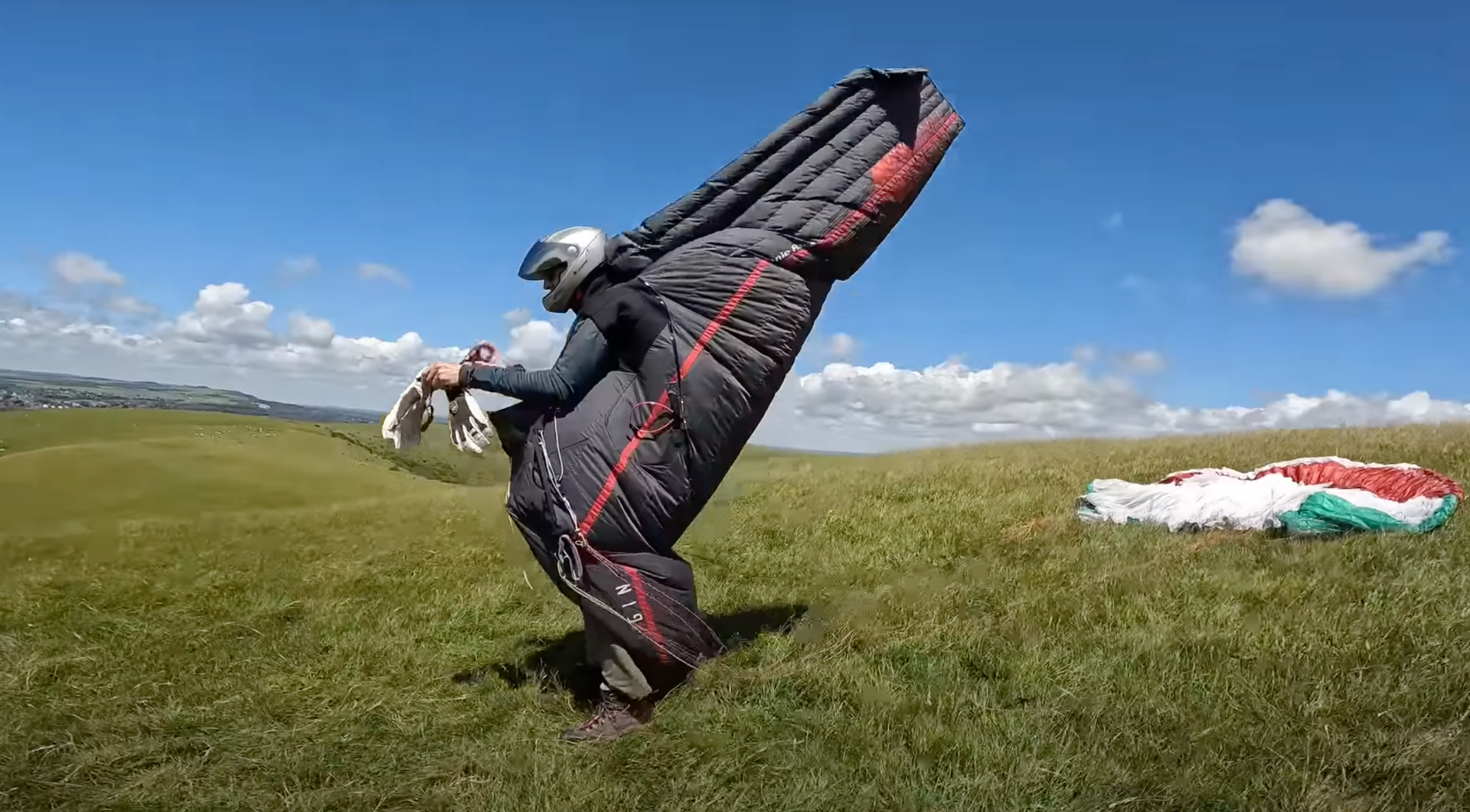
Specialist Harnesses
Specialist paragliding harnesses include mountain, acro, tandem, and speed flying harnesses. These are designed for specific activities like hike-and-fly, para-alpinism, speed flying, aerobatic flying (acro), or tandem flying. If you're exploring one of these areas, you'll likely need a second harness, as a single harness can't do everything without compromises. As a result, many pilots now own multiple harnesses to best suit each activity.
Mountain Paragliding Harnesses
Mountain paragliding harnesses are ultra-light, under 1 kg (most under 0.5 kg), designed for pilots combining paragliding with mountain adventures like hiking, climbing, or alpinism. Prioritising minimal weight and pack size, they sacrifice protection, comfort, and durability. Ideal for hike-and-fly, minimalist versions cater to para-mountaineers and alpinists. With Dyneema cords or thin webbing, split-leg designs, and minimal padding, they offer a fixed, upright position. Most lack protection or reserve containers, relying on add-ons. Unsuitable for ground handling or harsh environments, they demand careful use to minimise wear.

Acro Paragliding Harnesses
Acro paragliding harnesses are made for freestyle and aerobatic paragliding, know as acro. They tend to be open, upright, have a seatboard, robust and hold multiple reserves.
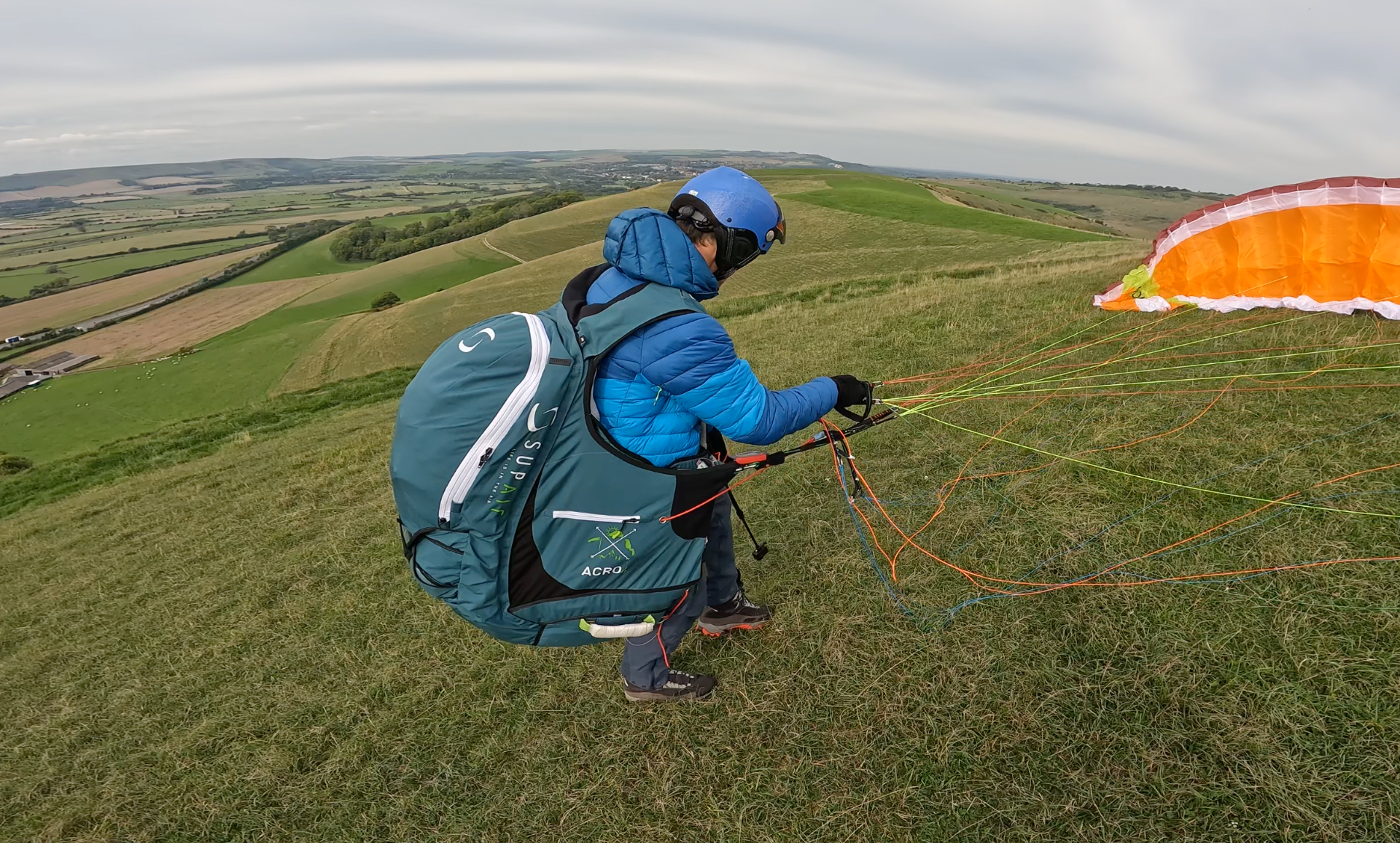
Tandem Paragliding Harnesses
Tandem pilot and tandem passenger harnesses are designed for particular needs of tandem paragliding.
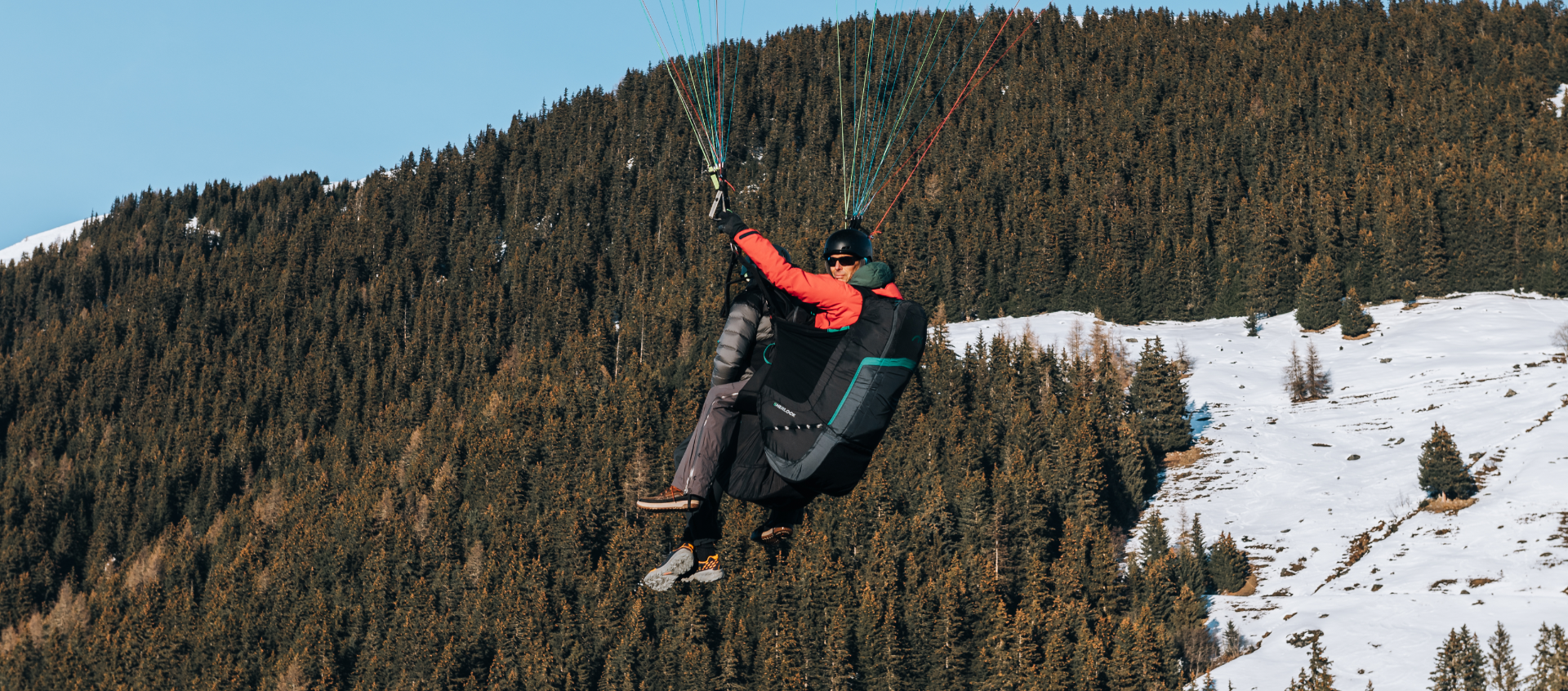
Speed Flying Harnesses
Speed flying and speed riding harnesses are designed for the specific requirements of flying speed wings on foot or with skis, respectively.
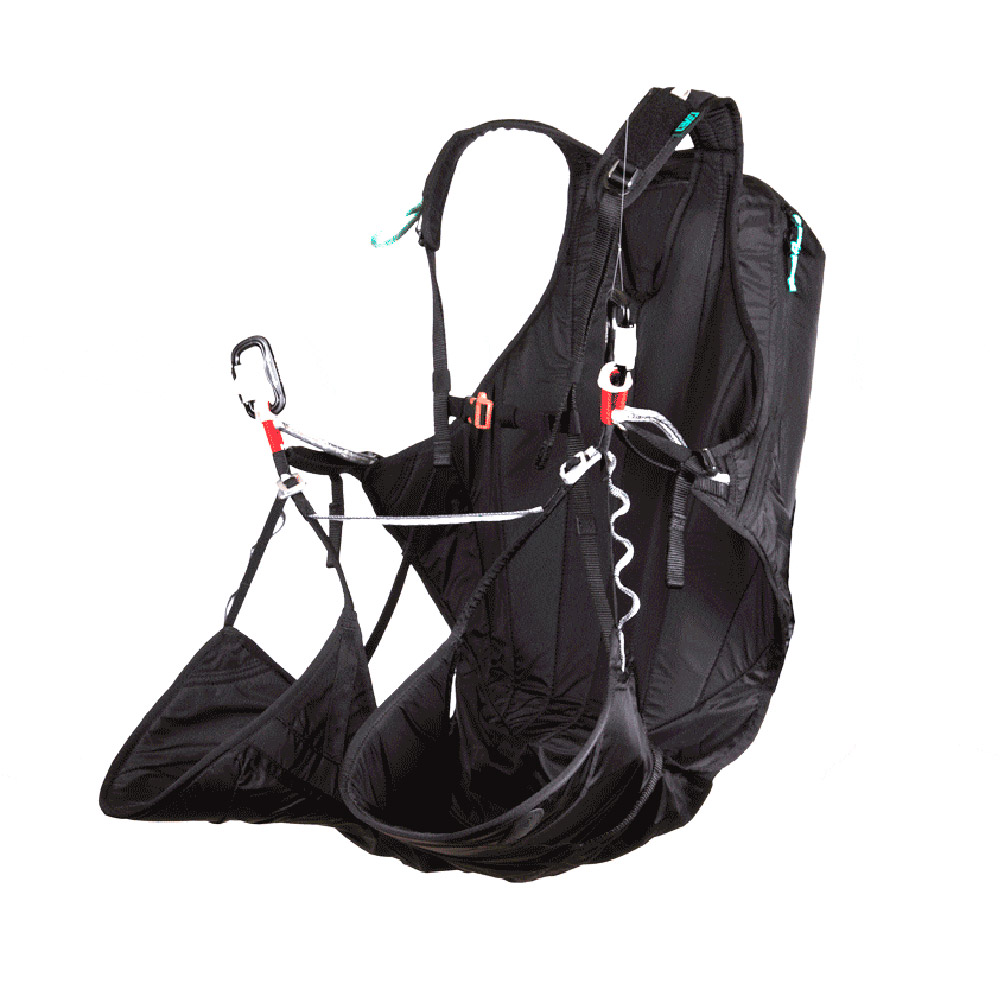
First Paragliding Harnesses
To help new pilots choose the right harness, we've created a First Paragliding Harnesses category, featuring harnesses we recommend for beginners, though many are also popular with experienced flyers. Most are not reversible, but some are. Available in standard or lightweight versions, all include provision for a reserve parachute.
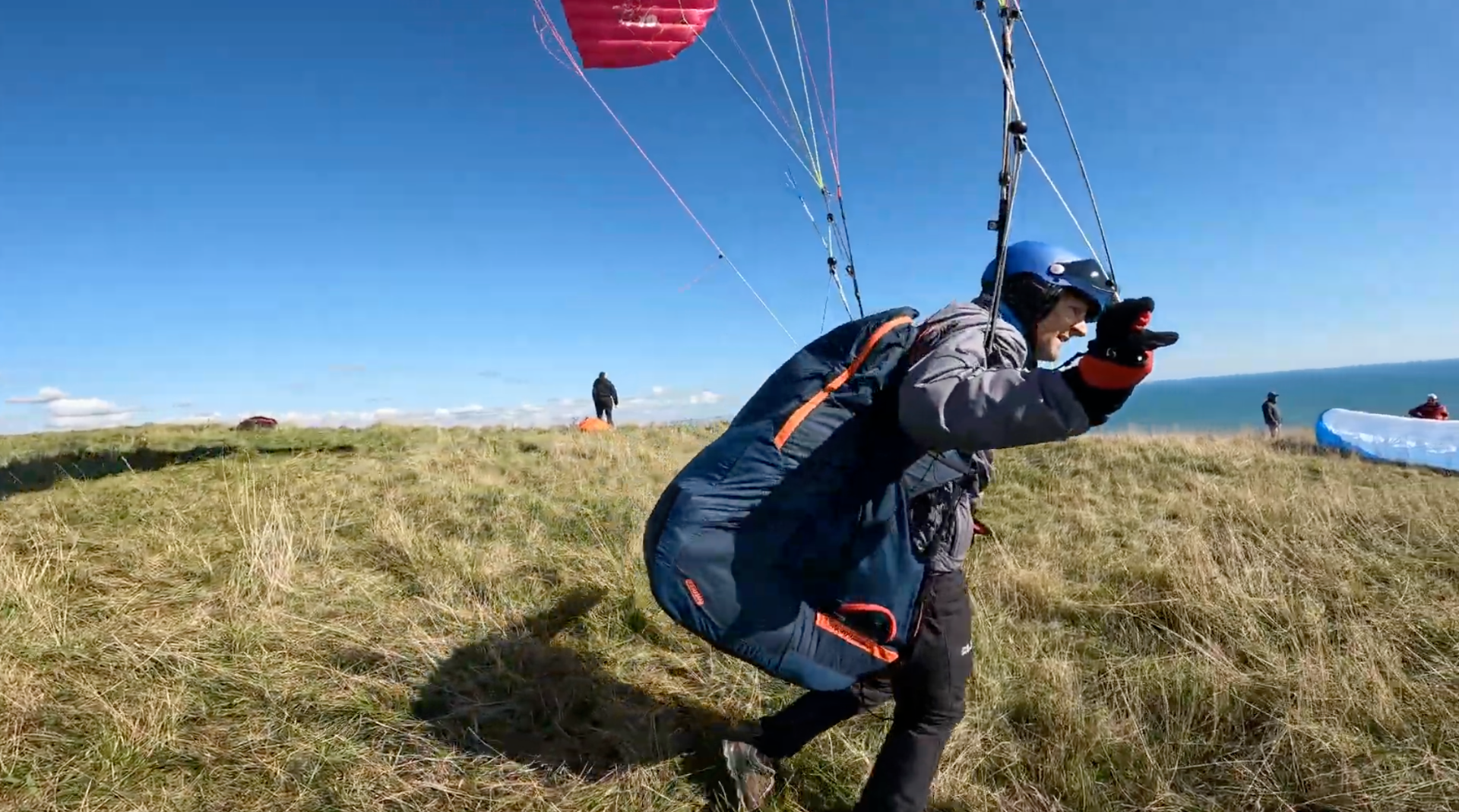
Ground Handling Harnesses
Many pilots ask us which harnesses are best for ground handling, so we’ve created a Ground Handling Harnesses category. These harnesses are more substantial, featuring durable webbing, extra padding, and a design that moves naturally with your body when upright. We’ve excluded minimalist ultra-light harnesses, as their narrow cord straps and fixed position make them uncomfortable, prone to damage, and less suited for kiting practice.
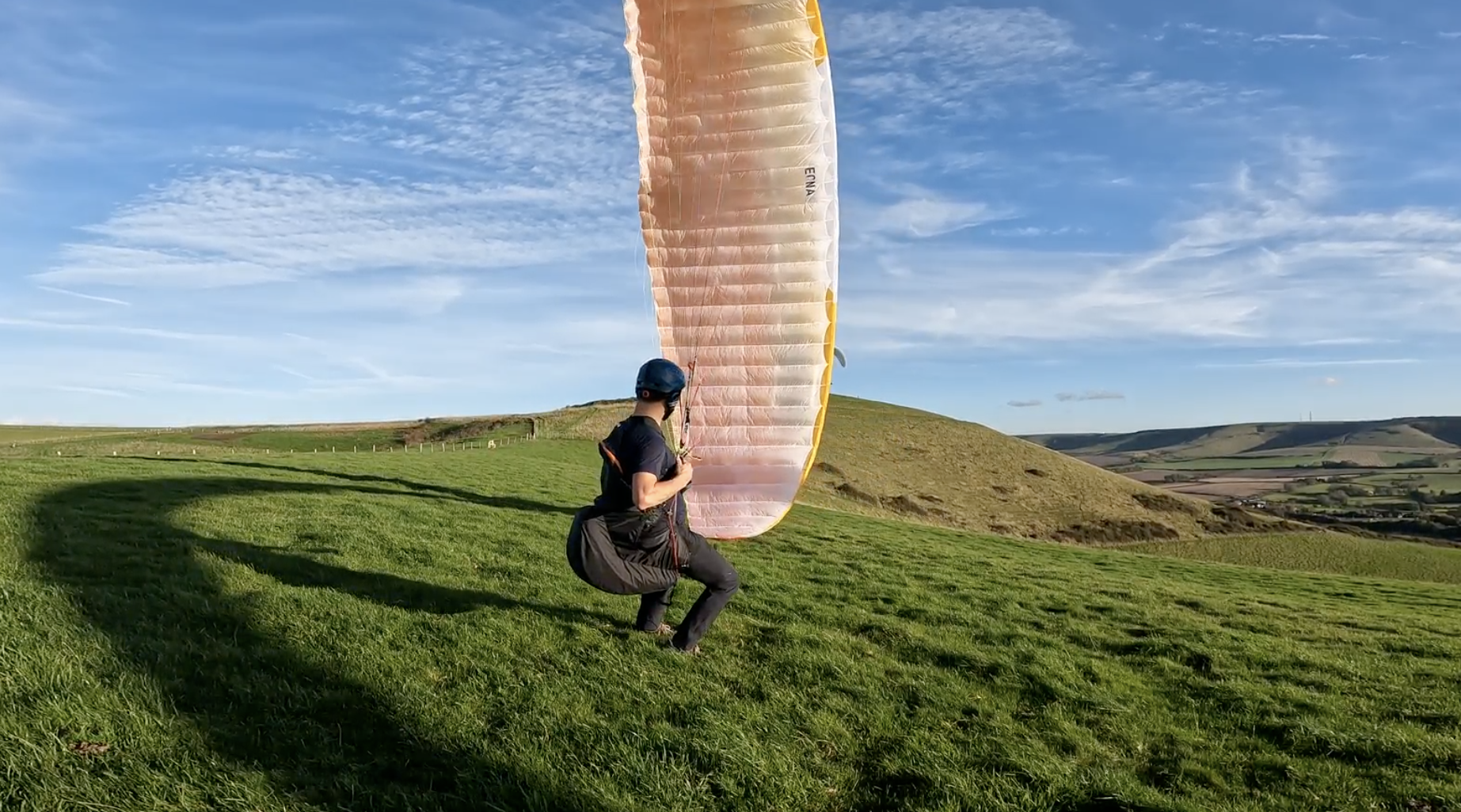
Video: Paragliding Harnesses: Which One’s Right for You?
Buying the Right Harness
Want expert help choosing the right and best gear for YOU? Use our unique Flybubble MATCH service.
We offer a select range of the very best harnesses from the top paraglider manufacturers.
See the current range in the Harnesses section of our website.
Brought to you by Flybubble
Like what we do? The best way to support us is to buy gear from us and recommend us to others, thank you!

